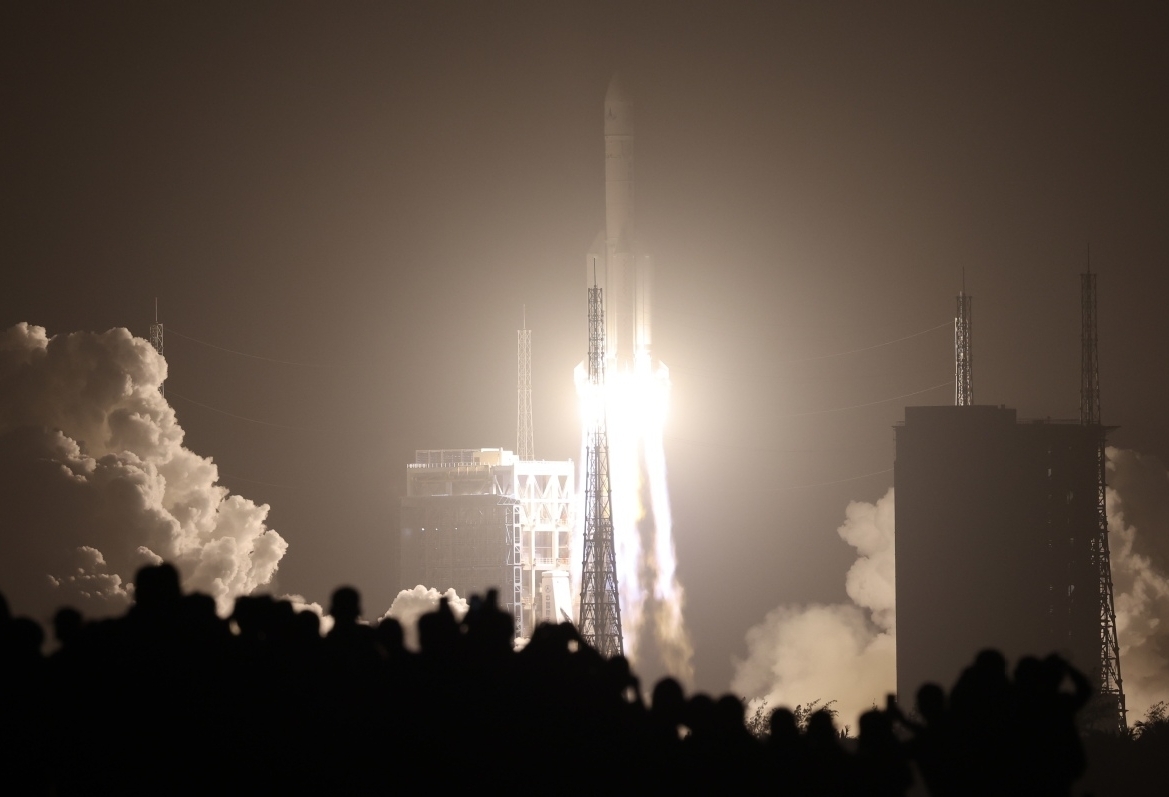



China launches Chang'e-5 to collect, return moon samples

Baku, November 24, AZERTAC
China Tuesday launched a spacecraft to collect and return samples from the moon, the country's first attempt to retrieve samples from an extraterrestrial body, according to Xinhua.
A Long March-5 rocket, carrying the Chang'e-5 spacecraft, blasted off from the Wenchang Spacecraft Launch Site on the coast of southern island province of Hainan at 4:30 a.m. (Beijing Time).
Chang'e-5 is one of the most complicated and challenging missions in China's aerospace history, as well as the world's first moon-sample mission for more than 40 years.
The mission will help promote China's science and technology development, and lay an important foundation for China's future manned lunar landing and deep space exploration, said Pei Zhaoyu, deputy director of the Lunar Exploration and Space Program Center of the China National Space Administration.
Chang'e-5, comprising an orbiter, a lander, an ascender and a returner, with a total takeoff mass of 8.2 tonnes, is expected to accomplish unmanned rendezvous and docking in lunar orbit, an unprecedented feat.
After it enters the lunar orbit, the lander-ascender combination will separate from the orbiter-returner combination.
While the orbiter-returner orbits about 200 km above the lunar surface, the lander-ascender will touch down on the northwest region of Oceanus Procellarum, also known as the Ocean of Storms, on the near side of the moon in early December.
Within 48 hours, a robotic arm will be extended to scoop up rocks and regolith on the lunar surface, and a drill will bore into the ground. About 2 kg of samples are expected to be collected and sealed in a container in the spacecraft.
Then the ascender will take off, and dock with the orbiter-returner in orbit. After the samples are transferred to the returner, the ascender will separate from the orbiter-returner.
When the geometric relationship between Earth and the moon is suitable, the orbiter will carry the returner back to Earth. The returner will reenter the atmosphere and land at the Siziwang Banner in north China's Inner Mongolia Autonomous Region.
The whole flight will last more than 20 days.
Pei said if the Chang'e-5 mission succeeds, China's current lunar exploration project would come to a successful conclusion.
Named after Chinese legendary moon goddess Chang'e, China's current three-step lunar exploration program, which began in 2004, includes orbiting and landing on the moon, and bringing back samples.
Through the program, China has acquired the basic technologies of unmanned lunar exploration with limited investment, said Pei.
China is drawing up plans for future lunar exploration. To pave the way for manned lunar exploration and deep space exploration, the Chang'e-5 mission will use a sampling method different to those of the United States and the Soviet Union, said Pei.
The scientific goals of the Chang'e-5 mission include the investigation of the landing area to obtain the on-site analysis data related to the lunar samples, as well as systematic and long-term laboratory analysis of the lunar samples.
The landing site of Chang'e-5 will be to the west of that of Chang'e-3, which went to the moon in 2013.
Baiba Braze appointed Latvia's foreign minister
Sony, Apollo discuss joint bid for Paramount, says source
Kazakhstan manufactures over 30,000 vehicles in Q1 2024
Kenya’s military chief dies in a helicopter crash
Apple says it was ordered to pull WhatsApp from China app store